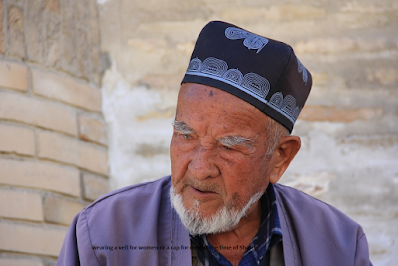 |
| Ilustration |
Wearing a veil for women or a cap for men
MuslimCreed – Hello everyone, back to the Muslim creed website, in this post, we will answer some of the questions that we have collected, while those questions are related to using the veil or cap during Shalat.
AssalamualaikumUstad, asking for enlightenment, how about when you are Shalat in the mosque using the veil that is always worn by mothers and gloves including the hijab,
Is it permissible to wear a veil while praying, should the veil be removed? Thank you master.
An interesting question for all of us, when a woman performs the Shalat Worship, the first thing to pay attention to, is what refers to a hadith of the Prophet sallallaahu ‘AlaihiWasallam that a woman is aurat, so remember that women are genitals.
Overall, the Muslim creed accommodates several opinions, explaining that the scholars divide the genitalia into 3, there is mugholadoh, mukhafafah then the third is other than the two divisions above.
here for the question posed that, there is a hijab when prostrating between Allah and his servant, yes, when we are prostrating.
Because our prophet Muhammad sallallaahuAlaihiWaSallam said in a hadith narrated by Bukhari and Muslim, that
I was ordered by Allah SubhanahuTa’Ala to the prophet to prostrate with 7 limbs, these 7 limbs may be a correction for all of us when prostrating in Shalat, and must be perfect from the 7 limbs earlier, as for the first 7 limbs hinting to the forehead and nose, then the palms of the hands, then the knees, then the tips of the toes.
Read also : Belief in the Books
Of the 7 limbs that are ordered, we must include them, even the scholars say, prostration in perfect Shalat and what will make his Shalat valid is when he prostrates with these 7 limbs. so repeated, these 7 limbs are, forehead, nose, two palms, two knees of our feet, and the fingers that are on our two feet.
From this the scholars explain that when someone is Shalat, then on his forehead there is something covering then his Shalat is not valid, so if there is something that covers
It is an item that is attached to his head or something that has meaning with it, meaning that the item is with the person who is Shalat, unless the object is separated from him, for example: a prayer rug or a carpet or something else, that is already a different law.
From the explanation above, some of the scholars said so, so when for example there is something covering our forehead, when prostrating then we must follow the hadith of the Prophet Muhammad sallallaahuAlaihiWasallam earlier, so many scholars say it is invalid when the prostration is blocked by objects that clinging to his body.
Now let’s take a conclusion for a woman, whose Shalat then covers her palms with gloves or wears a veil that covers a woman when she’s Shalat, then it is obligatory for her to open her face and also her palms, yes, the scholars explain a woman when Shalat, then his face must be exposed and then the palms of his hands are also exposed.
Then the scholars explained and referred to the first hadith, which we have already conveyed that women are genitals, then it is detailed when they are Shalatnya in front of foreign men, in public mosques that are not closed, such as in some mosques where there is no cover between men and women, then here the scholars say
He said that the woman must be covered, meaning that it is permissible, or to continue to wear the veil when Shalat.
Information that we can convey to what the scholars say,
when using a cap, the cap must be opened, or when wearing a cap it means that we have to open our forehead, yes, we open it so that the forehead can be exposed to the place of prostration and we can get perfect prostration, so don’t be mistaken when we are Shalat
In the Shafi’i school, we must be perfect in prostration, in order to get a perfect prostration, meaning that in prostration, our forehead must be attached to the place of prostration.
then there is another question, how about ustad, because I often find when there are Shalat people, they have long hair, then when they want to prostrate, they first straighten their hair, then prostrate. Is this kind of thing also justified?
Such a movement may be justified, from the basis of taking the hadiths of the Prophet Muhammad SAW earlier, so that when the position of prostration our foreheads really stick to the place of our prostration and get a perfect prostration.
Muslim creed readers, maybe that’s all that can be conveyed in this post, hopefully we can take lessons from this question, and Shalat we get a reward from Allah Subhanahuwata’ala,
Thank you see you
Read a Related Article

